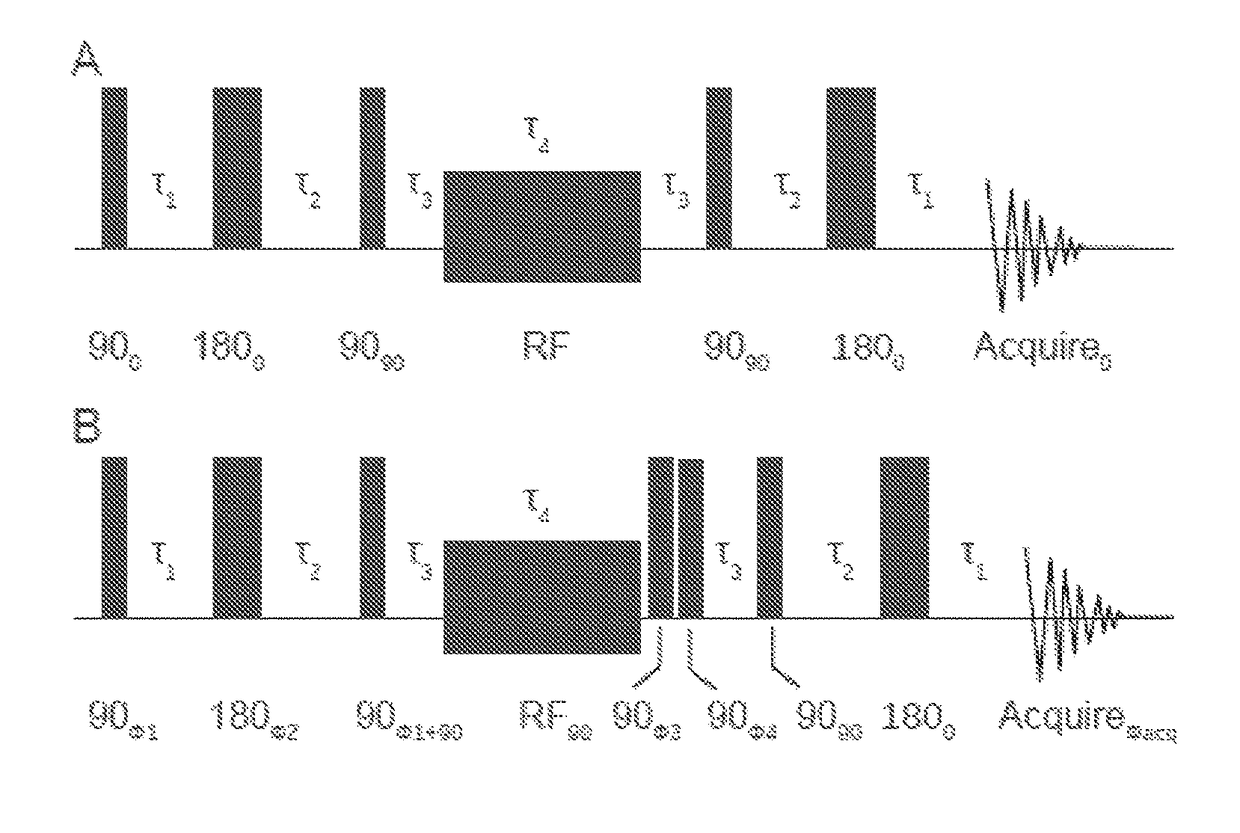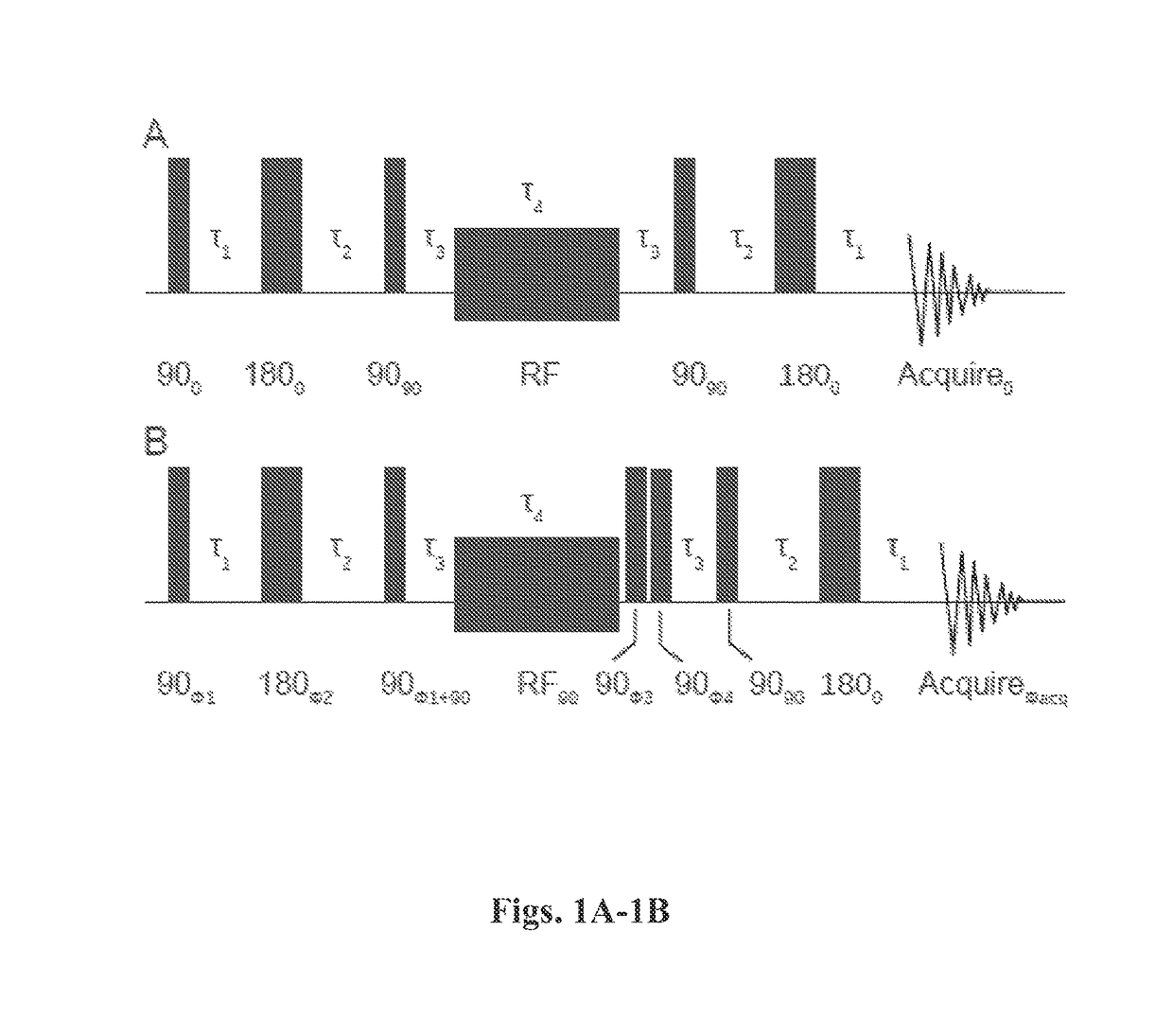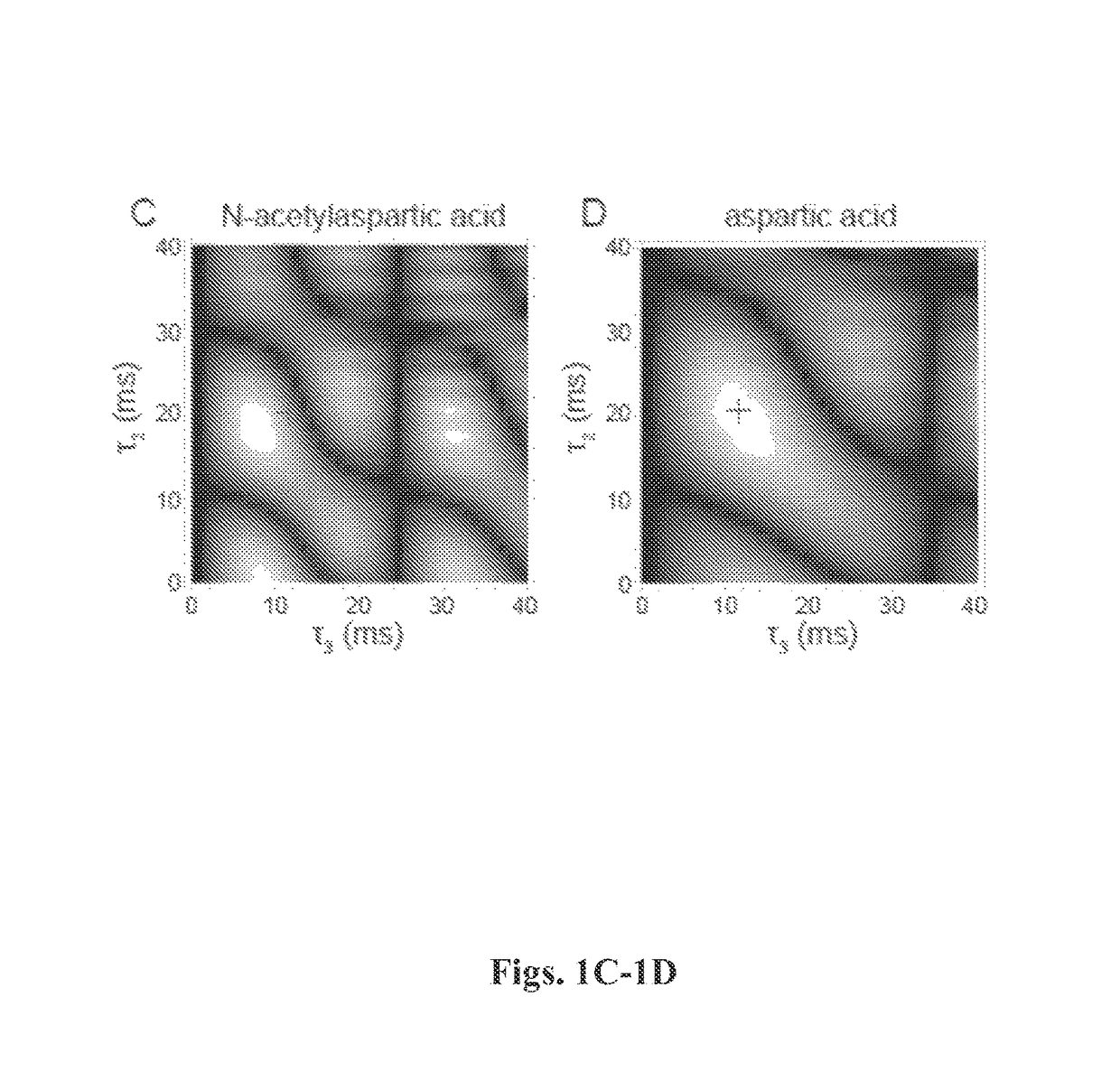Nuclear singlet states as a contrast mechanism for NMR spectroscopy
a technology of nmr spectroscopy and singlet states, applied in the field of nuclear magnetic resonance, can solve the problems of difficult to resolve from one another, unresolved and unseen spectral components, and complex chemical mixture spectral spectra that often contain nuclear magnetic resonance spectral components, etc., to achieve the effect of suppressing spectroscopic signals and enhancing spectroscopic contras
- Summary
- Abstract
- Description
- Claims
- Application Information
AI Technical Summary
Benefits of technology
Problems solved by technology
Method used
Image
Examples
examples
SUCCESS Applied to Brain Metabolites
[0126]SUCCESS technique was applied in vitro on three target molecules that are important brain metabolites: aspartate, threonine, and glutamine. The spectral lines of these molecules are overlapped by peaks from N-acetylaspartate, myo-inositol, and glutamate, respectively. The test mixtures employed are listed in Table 1.
[0127]
TABLE 1SamplesTargetBackgroundTargetConcentrationConcentrationMolecule(mM)Background Molecule(mM)aspartic acid3.0N-acetylaspartic acid11.4threonine50.0myo-inositol50.0threonine5.0myo-inositol50.0glutamine40.0Monosodium80.0glutamate
[0128]Each consisted of a target molecule and the interfering background substance dissolved in a pH 7.0 phosphate buffer with 69 mM total phosphate concentration. Metabolite concentrations were chosen to reflect typical ratios found in vivo but at higher absolute concentration. A control solution was created for each target and background molecule alone in the pH 7.0 phosphate buffer. Reagents we...
PUM
| Property | Measurement | Unit |
|---|---|---|
| resonance frequency | aaaaa | aaaaa |
| pH | aaaaa | aaaaa |
| diameter | aaaaa | aaaaa |
Abstract
Description
Claims
Application Information
 Login to View More
Login to View More - R&D
- Intellectual Property
- Life Sciences
- Materials
- Tech Scout
- Unparalleled Data Quality
- Higher Quality Content
- 60% Fewer Hallucinations
Browse by: Latest US Patents, China's latest patents, Technical Efficacy Thesaurus, Application Domain, Technology Topic, Popular Technical Reports.
© 2025 PatSnap. All rights reserved.Legal|Privacy policy|Modern Slavery Act Transparency Statement|Sitemap|About US| Contact US: help@patsnap.com



